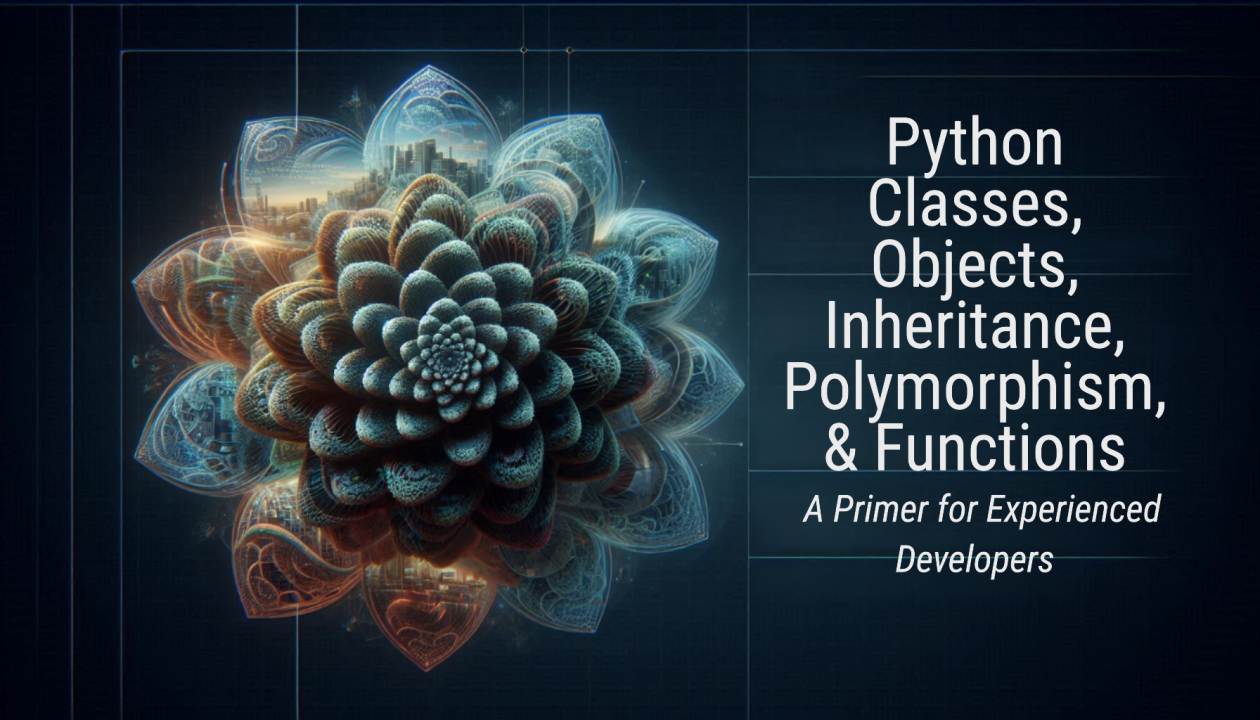
Python Classes, Objects, Inheritance, Polymorphism, and Functions: A Primer for OOP Developers
Abhishek Srivastav
Technical Architect specializing in ECM AI/Gen-AI at Tata Consultancy Services
If you're coming from a world of Java, C++, or similar languages, you'll find Python's approach to object-oriented programming (OOP) both familiar and refreshing. While the core concepts remain the same, Python's syntax and philosophy offer unique twists that can enhance your coding experience. Let's dive in.
?? Classes and Objects
In Python, a class is a blueprint for creating objects. It defines the attributes (data) and methods (functions) that an object of that class will possess. An object, on the other hand, is an instance of a class, with its own specific values for the attributes.
Common Use Cases
Key points:
* Python uses class keyword to define classes.
* The __init__ method is a constructor, called when an object is created.
* self refers to the instance of the class.
* Object attributes are accessed using dot notation (e.g., car1.description)
?? Inheritance
Inheritance allows you to create new classes (subclasses) that inherit attributes and methods from existing classes (superclasses). This promotes code reusability and hierarchical relationships.
Common Use Cases
Key points:
* Use the class Subclass(Superclass) syntax for inheritance.
* The super() function is used to access methods of the parent class.
* Python supports multiple inheritance, but use it cautiously.
?? Polymorphism
Polymorphism means "many forms." In Python, it allows objects of different classes to be treated as if they were of the same type. This is achieved through method overriding and duck typing.
领英推荐
Common Use Cases
Key points:
* Overriding methods allows subclasses to provide their own implementations.
* Duck typing focuses on an object's behavior rather than its type.
?? Functions
While not strictly OOP, functions are essential building blocks. They encapsulate reusable logic and improve code readability.
Common Use Cases
Key points:
* Use def keyword to define functions.
* Functions can take arguments and return values.
* Python supports lambda functions for short, anonymous functions.
Conclusion
Python's approach to OOP is clean, intuitive, and efficient. Understanding classes, objects, inheritance, polymorphism, and functions is crucial for building robust and scalable applications. By mastering these concepts and experimenting with different use cases, you'll be well on your way to becoming a proficient Python developer.
Remember: Python offers flexibility, but with great power comes great responsibility. Use object-oriented principles wisely to create maintainable and extensible code.
Don't forget to share this article with your friends who are interested in learning Python!
Happy learning! ??